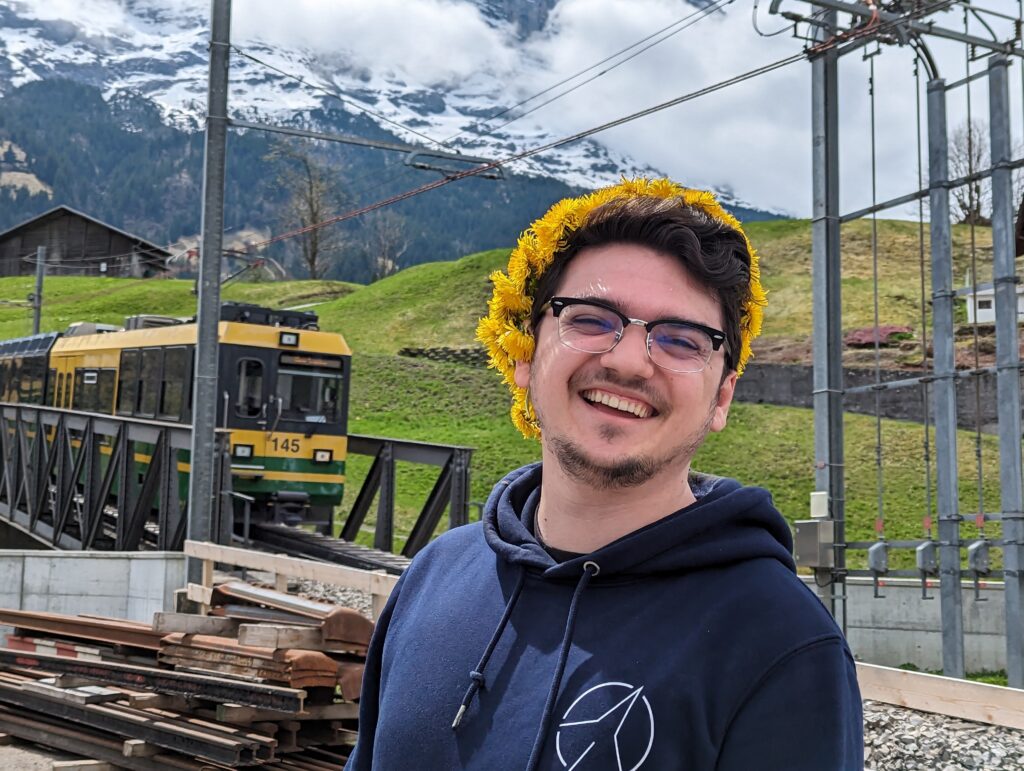When we were asked to travel to the Netherlands just to record a 10-minute video for our upcoming MOOC, I thought flying for such a short event didn’t make much sense. We already travel a lot for working purposes (secondments, conferences, and other events), so I decided to make the trip more worthwhile by attending two extra events at the destination and doing everything by train.
Train traveling is more fun than flying, as you get to see the landscape and people (culture, languages) slowly change throughout your trip. Also, you don’t have to go through the pain of security and baggage controls and all the idle time spent in airports. It is a much more climate-conscious way of moving, too.
However, there are two significant drawbacks: the total travel time for long trips and the cost compared to flying. But that does not mean that there are no ways around it. Travel time can be spared by doing some work while on the move, and cost can be minimized by using some rail pass, like Interrail. The Interrail pass covers the major railway operators in 33 European countries. It lets you travel with great flexibility and at a predictable cost (although it also has some issues that will be covered later).
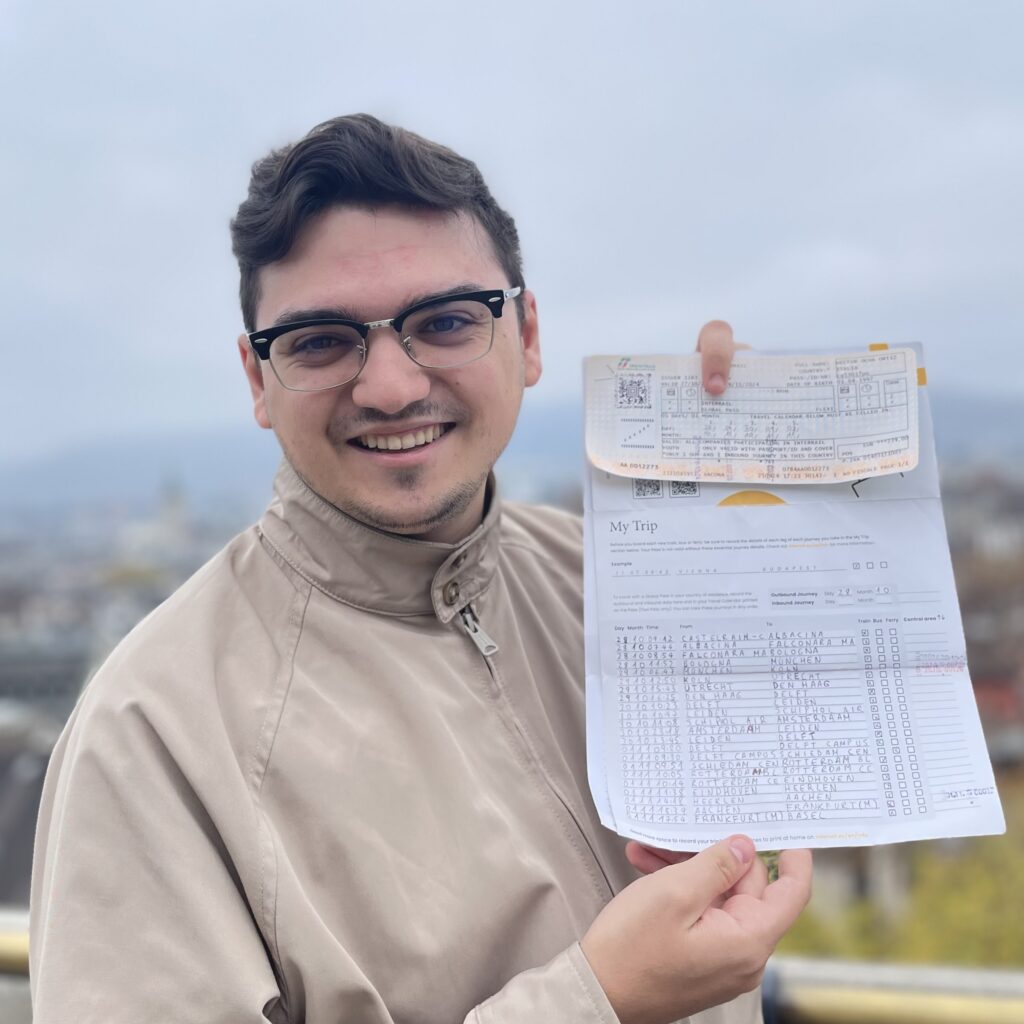
The first step is to decide the route to take. From Italy, where my university is located, to the Netherlands, the first issue to tackle is crossing the Alps. There are four main routes across: via Fréjus (closed since summer 2023 due to a landslide, but set to reopen soon), via Simplon (which has fewer long-distance routes from Italy compared to the following ones), via Gotthard (with EuroCity trains linking Milan with Zürich every 2 hours), and via Brenner (with Railjet trains linking Verona with Munich every 2 hours). They all take a similar time, but due to the reasons just stated, via Gotthard and via Brenner are the easiest routes to take currently. I took them both, a different one each way, to make it more enjoyable.
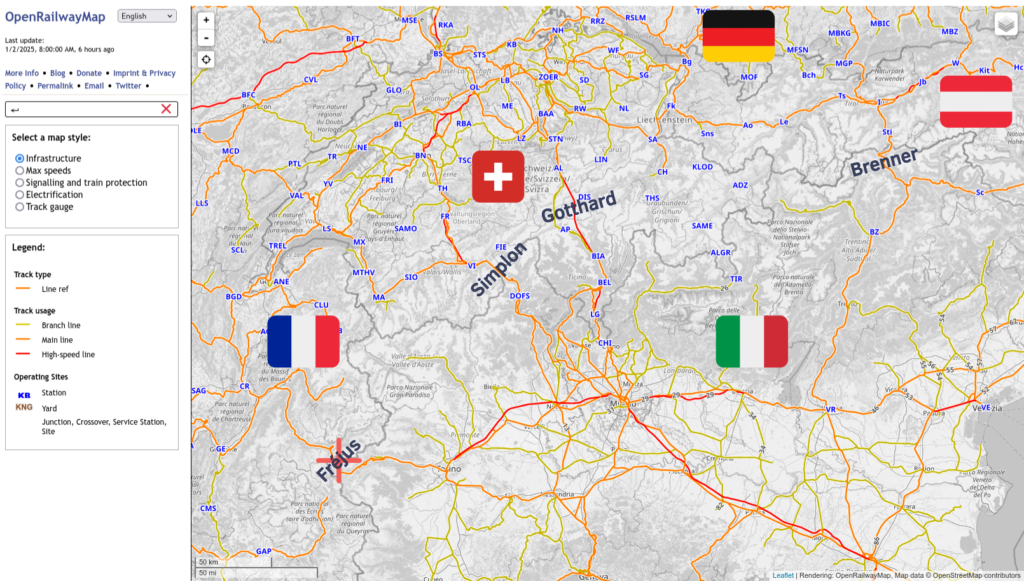
From Camerino to Delft, it takes non-stop (with no delays or missed connections) around 22-24 hours by train. Therefore, I decided to split the trip into two days each way, of around 10-12 hours of travel per day, with the middle points where to split being around Munich or somewhere in Switzerland. As the Interrail pass counts natural days, a pass of at least 4 days is needed for this trip. I went for the 5 days in 1 month Global Pass so that I could use one day within the Netherlands.
Monday 28th October 2024
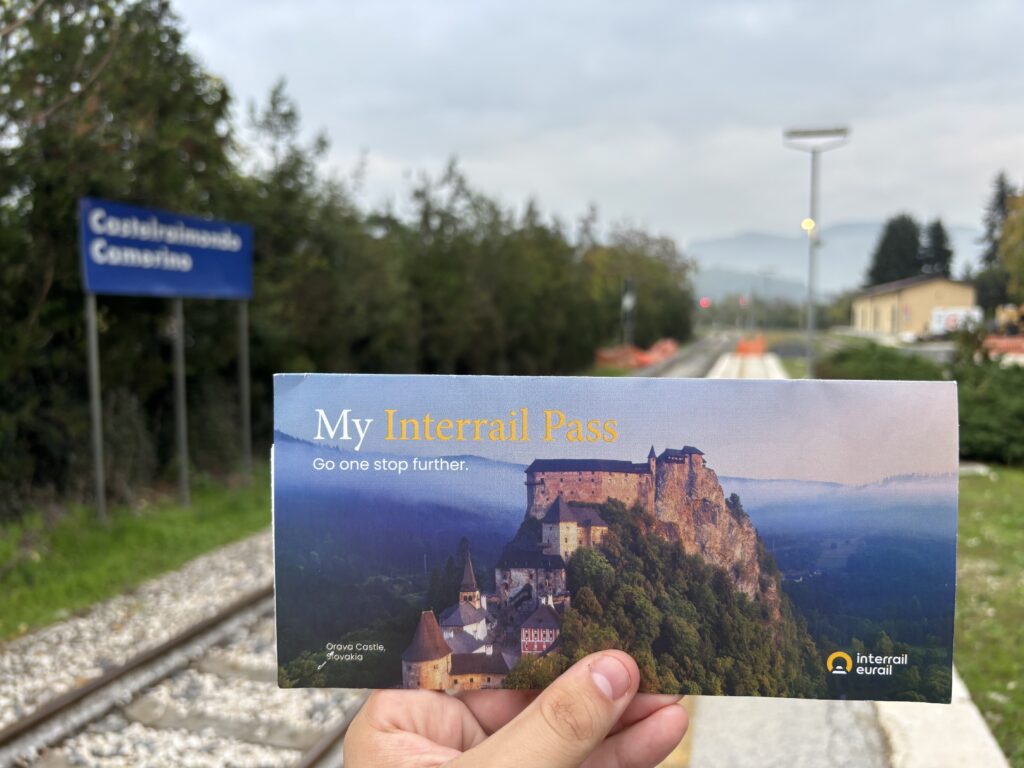
The trip started in Camerino, with a bus ride to the nearest train station in Castelraimondo, 10km away. There, I got onto a regional train to Albacina, a junction station where I changed to another one to take me towards Falconara Marittima, by the Adriatic coast. Alongside the coast are frequent north-south services, both with regional and long-distance trains.
However, the regional trains going north on this line do not appear in Rail Planner (the official Interrail/Eurail app) or other international railway apps, even if they are valid to use with Interrail. This is because Trenitalia does not operate them, but rather Trenitalia Tper (owned partially between Trenitalia and Tper, a company owned mainly by diverse governmental bodies in the Emilia-Romagna region) does, highlighting a problem with data findability and availability, problems which can only worsen as more and more companies across Europe operate diverse railway services if data user needs are not taken into account.
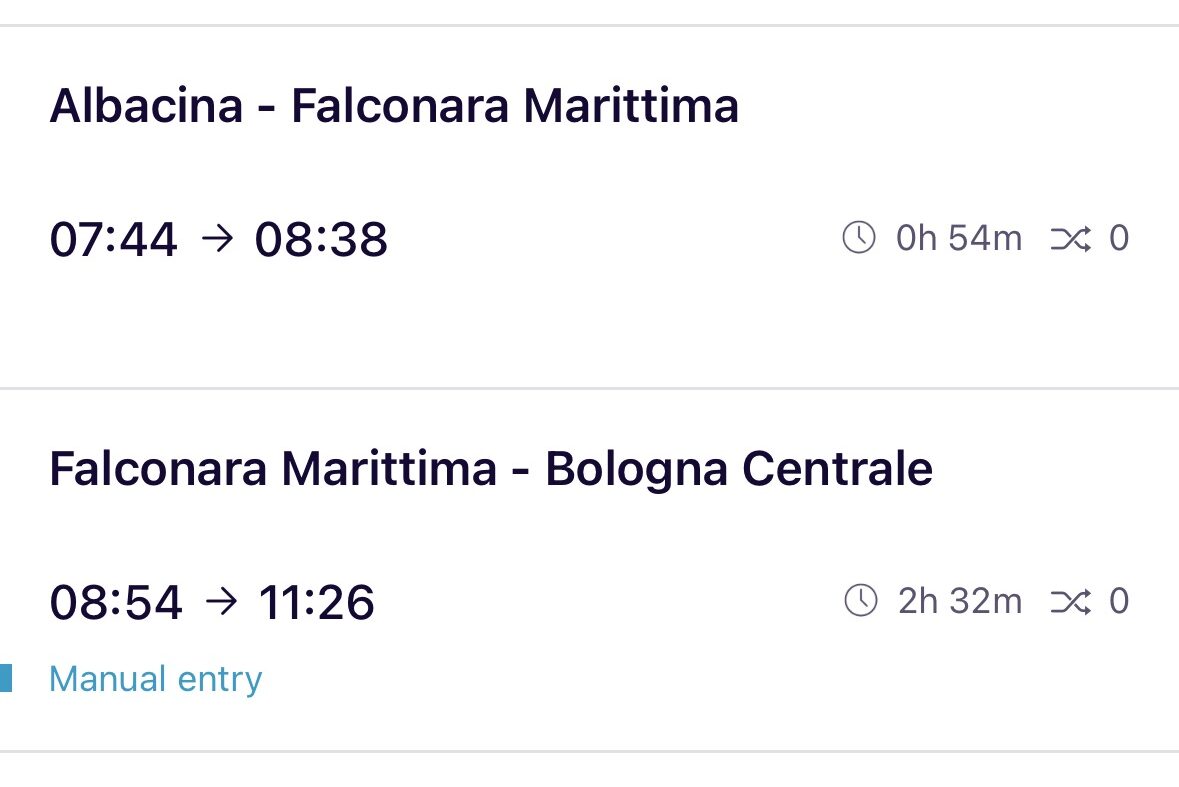
Even if long-distance trains are available on this route, it was beneficial for me to take the regional train to Bologna to save some money, as the time saved compared with the long-distance train was minimal in this case. But you may ask: why are you saving money this way? Isn’t Interrail supposed to cover all trains and have a fixed cost?
The answer is yes and no; it greatly depends on the country. In some countries, like Germany, Switzerland, and Austria, virtually all trains operated by the national operator and regional operators are included without extra fees (except for night trains). You hop on, and your ticket is valid. However, in countries like Italy, France or Spain, long-distance trains are reservation-only. This means that you need to have an assigned seat number before boarding. As Interrail passes are valid for any train, you need to pay this seat reservation, which in Italy is (for each train you board) 13€ for Freccia, 10€ for Eurocity/Railjet, and 3€ for Intercity.
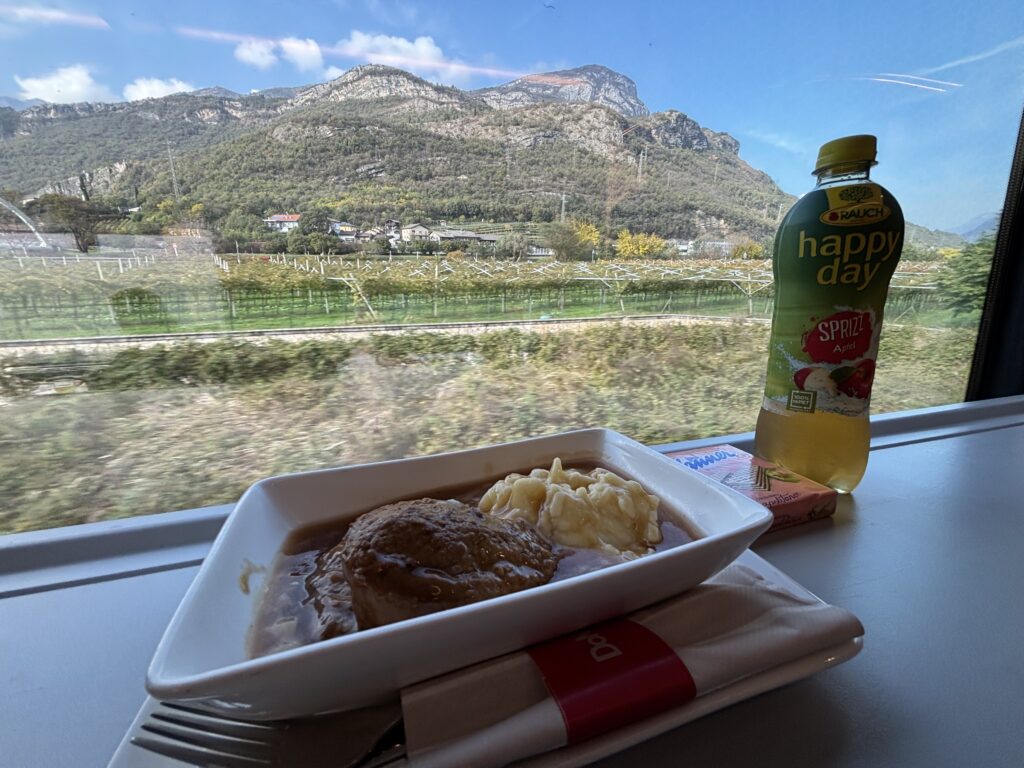
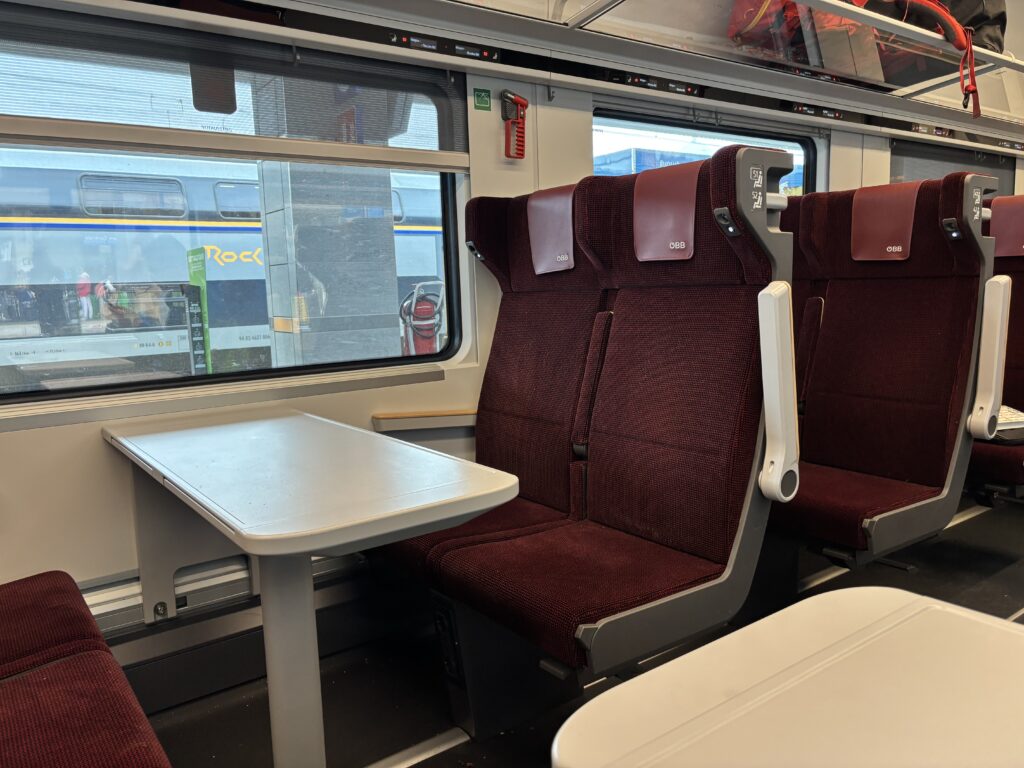
After arriving in Bologna, I hopped on a brand new Railjet train bound for Munich. This ride took 6 hours and 40 minutes and was the longest segment of the entire trip. I arrived bang on time at München Hauptbahnhof, checked in at my hostel for the night, and went to meet my friends. Munich just happens to be not only a big railway hub, bang in the middle between Camerino and Delft, but also one of the cities where I studied during my Master’s, so it was nice to see some familiar faces for dinner.
Tuesday 29th October 2024
Some noise at the hostel woke me up earlier than I had scheduled, so I took this to my advantage and hopped on an early ICE out of Munich towards Cologne (thanks, Interrail flexibility!). Long-distance trains in Germany are commonly delayed, so having that extra time can always be good later. However, my train was on time, so that meant having an extra hour to spare added to my originally expected half-hour in Cologne (as the ICE trains to the Netherlands come every two hours). It is a mere two-minute ride over the river from the Messe/Deutz station, where I just arrived, to Hauptbahnhof. And just next to Hauptbahnhof is the impressive Gothic-style Kölner Dom (Cologne Cathedral).
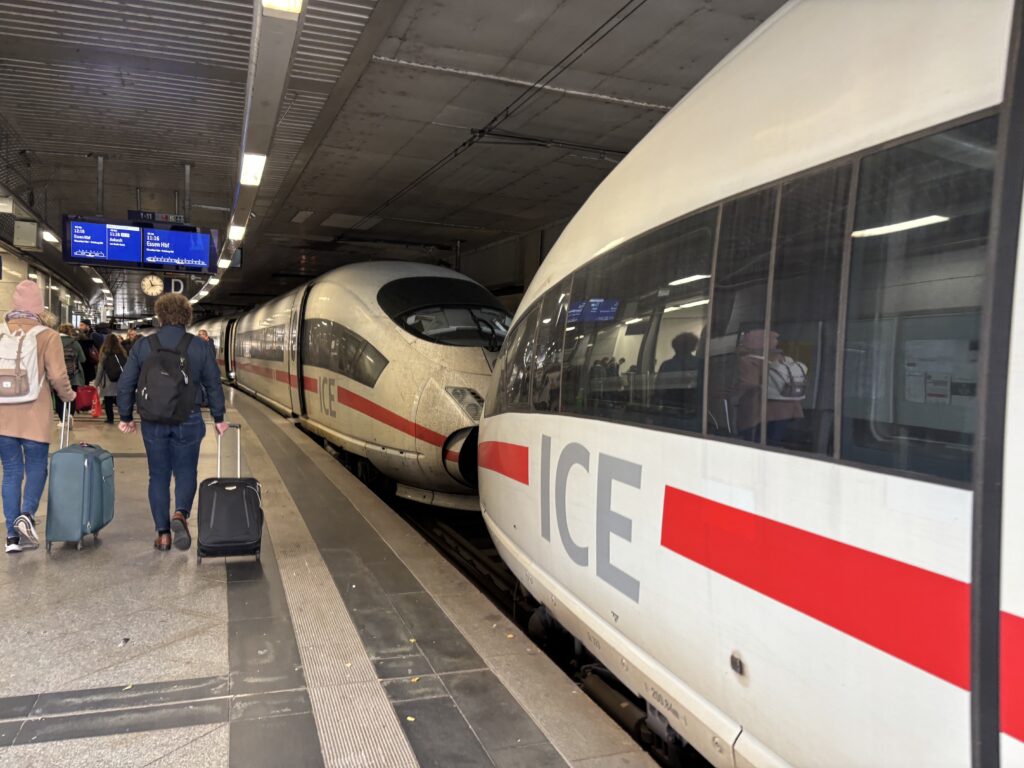
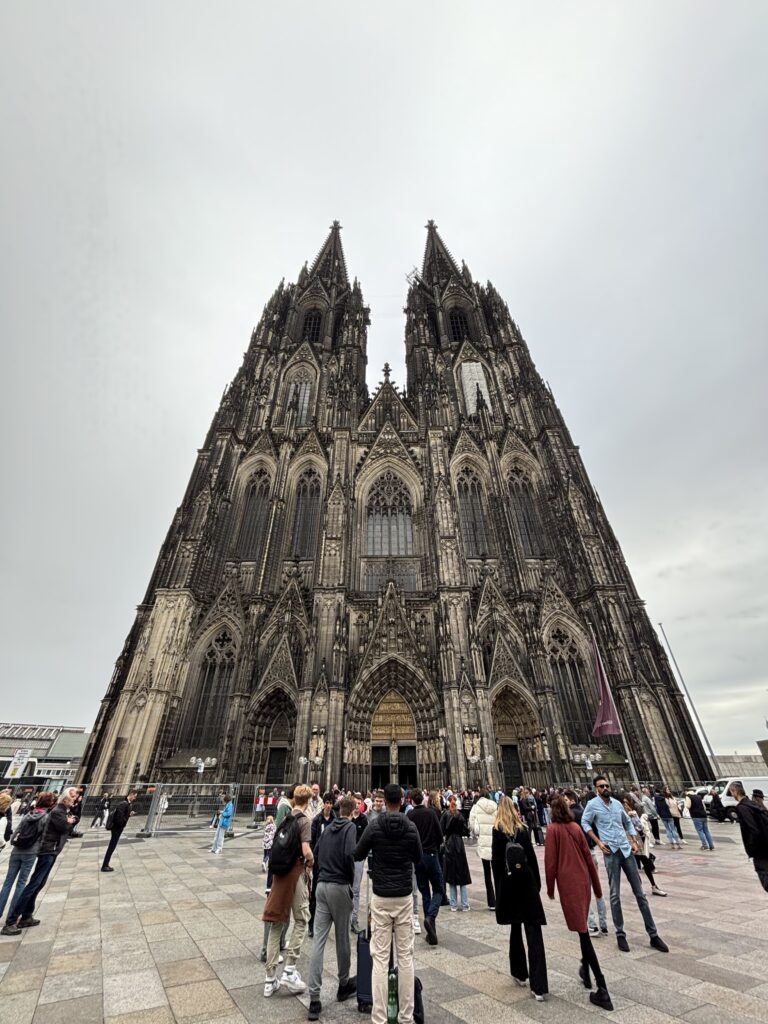

After visiting the cathedral and having lunch, I stepped onto a briefly delayed ICE International train towards Amsterdam, which I took until Utrecht, the urban cycling capital of the world. From there onwards, I took the very frequent Dutch trains, which almost function as a country-wide metro system, first to the Hague, and finally to Delft.
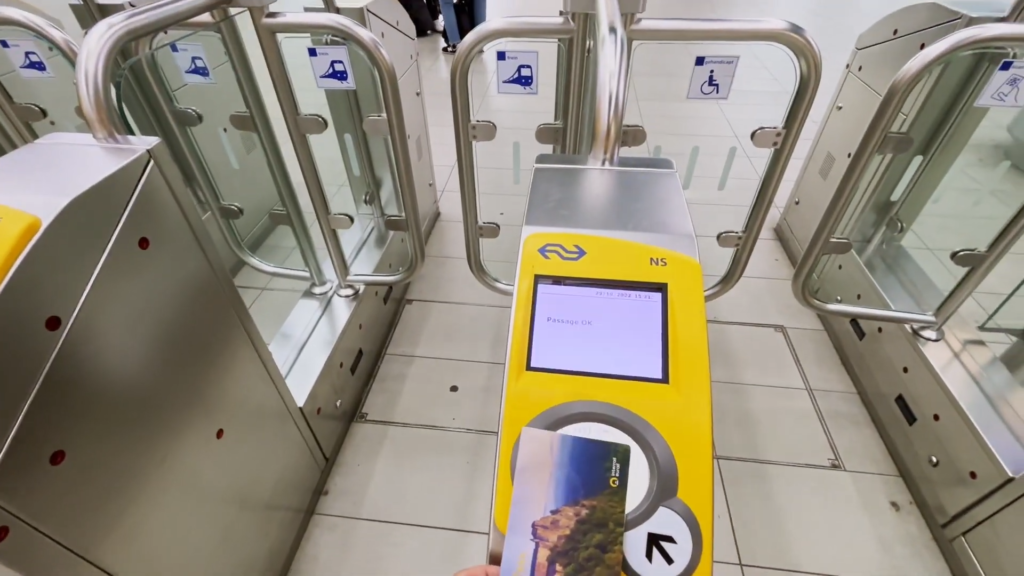
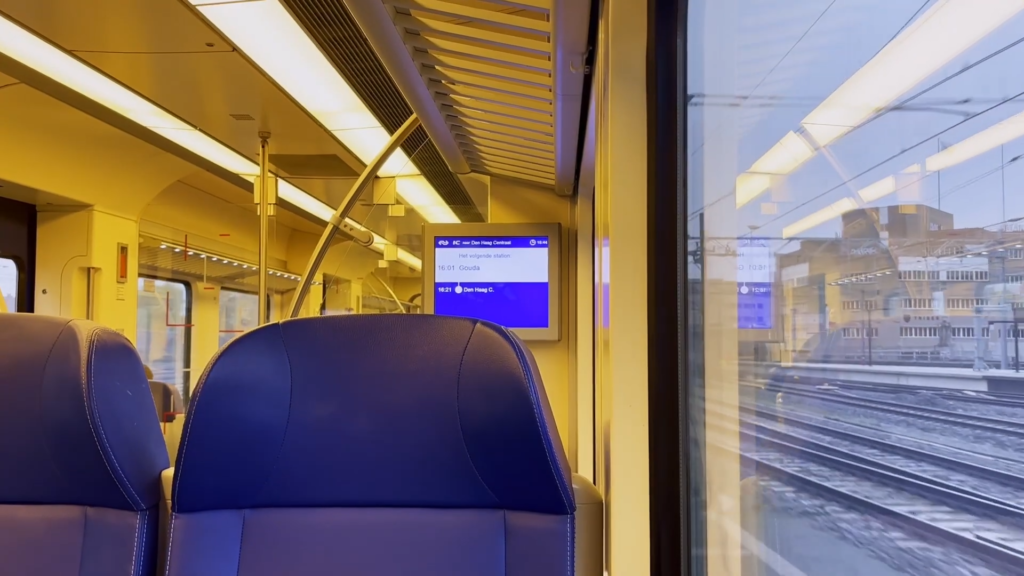
In Delft, I met with my ODECO colleagues, and we all had dinner together.
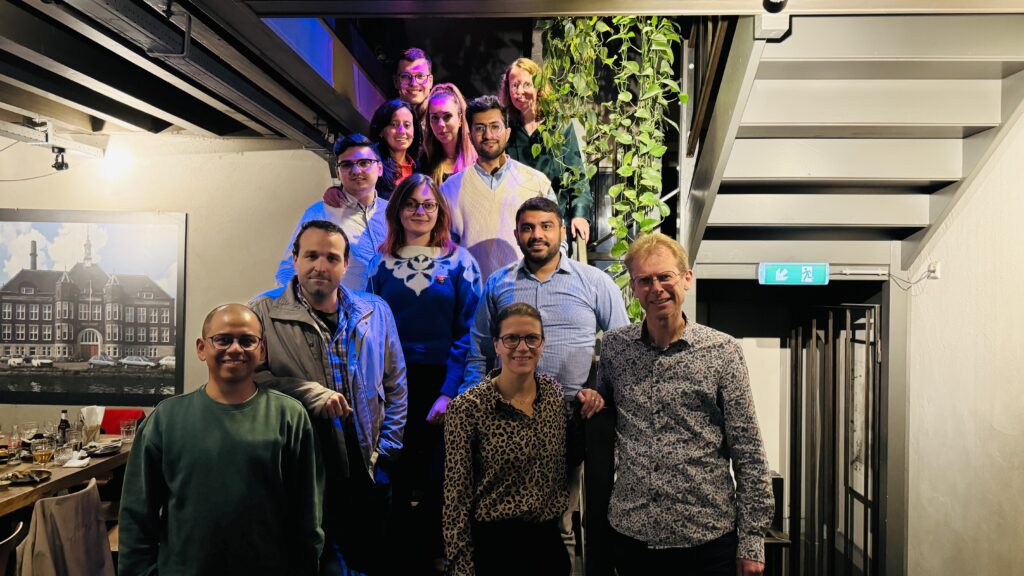
Wednesday 30th October 2024
Recording for the MOOC was done on different days during the week, but everyone was free on Wednesday. Together with TomTom, we organized an edition of the MapTime Amsterdam event on that day.
But first, we needed to head there. Luckily, as said before, the Dutch train network is well-connected and has frequent service. The first train took us to Leiden, where a cross-platform timed interchange made all the passengers flock between adjacent trains. Our new train took us as far as Schiphol Airport, which not only serves as an international aviation hub, but also as a national railway one.
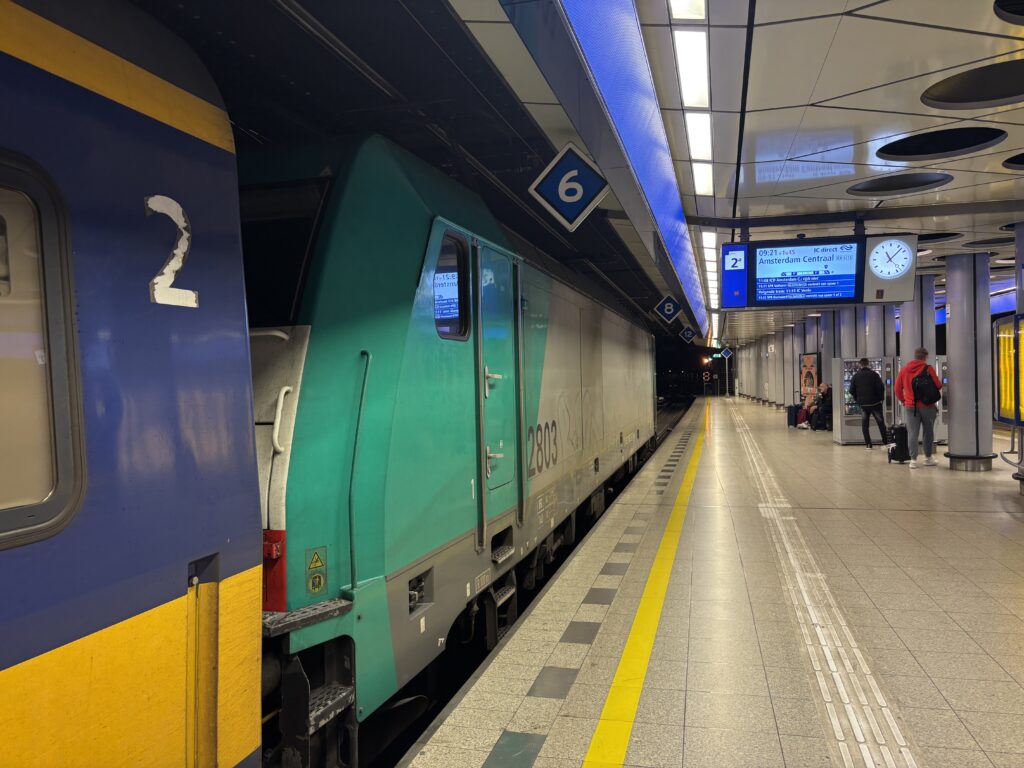
Our final train towards Amsterdam got canceled, but a conveniently (for us, although not so much for the rushing passengers that got off) delayed train from Brussels picked us up at the exact same time.
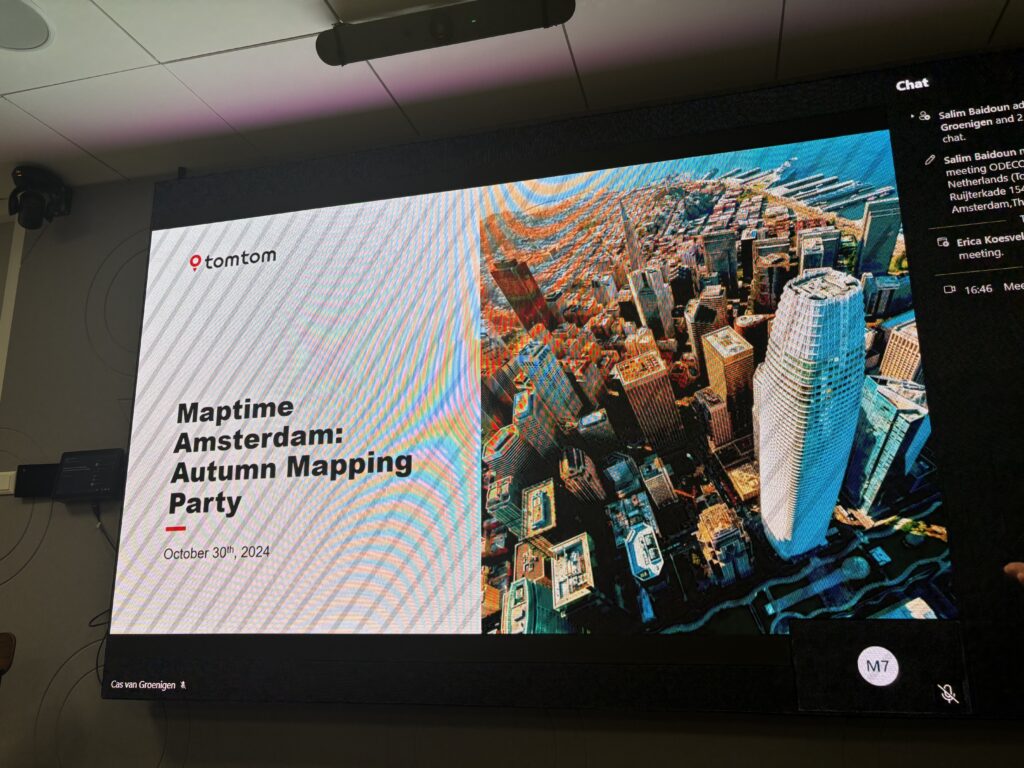
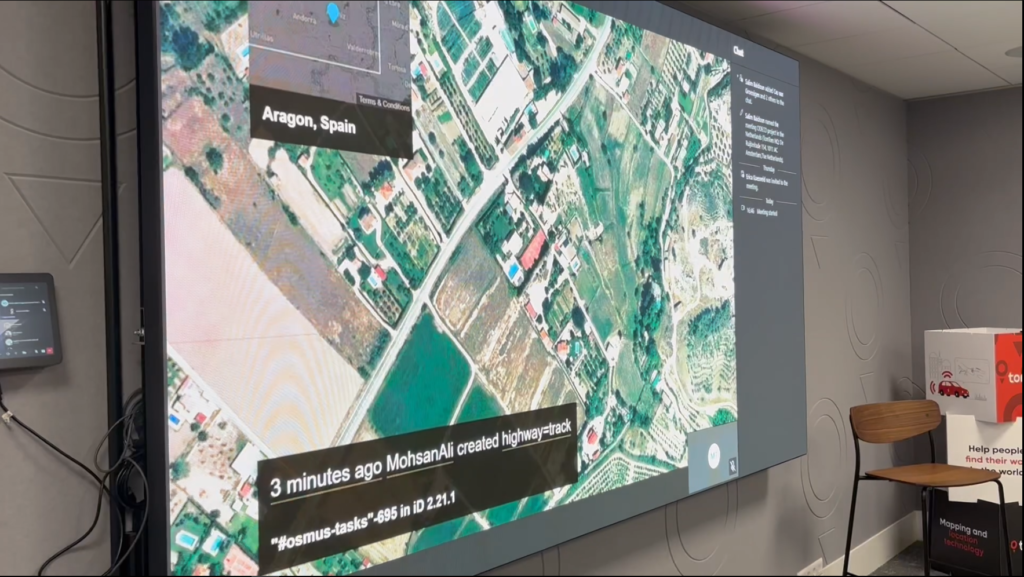
When we arrived in Amsterdam, we were greeted at the TomTom headquarters. In the morning, some of us took the opportunity to collect data by interviewing employees of the organization for upcoming publications. And in the afternoon, the remaining colleagues, as well as local mapping enthusiasts, arrived. Together, we exchanged ideas and started an easy mapping exercise to teach the ODECO ESRs how collaborative data is generated and added to the OpenStreetMap database. An area in rural Spain was selected where the TomTom team detected missing roads. This area was then split into tasks mapped by each user by tracing ways on top of aerial photos.
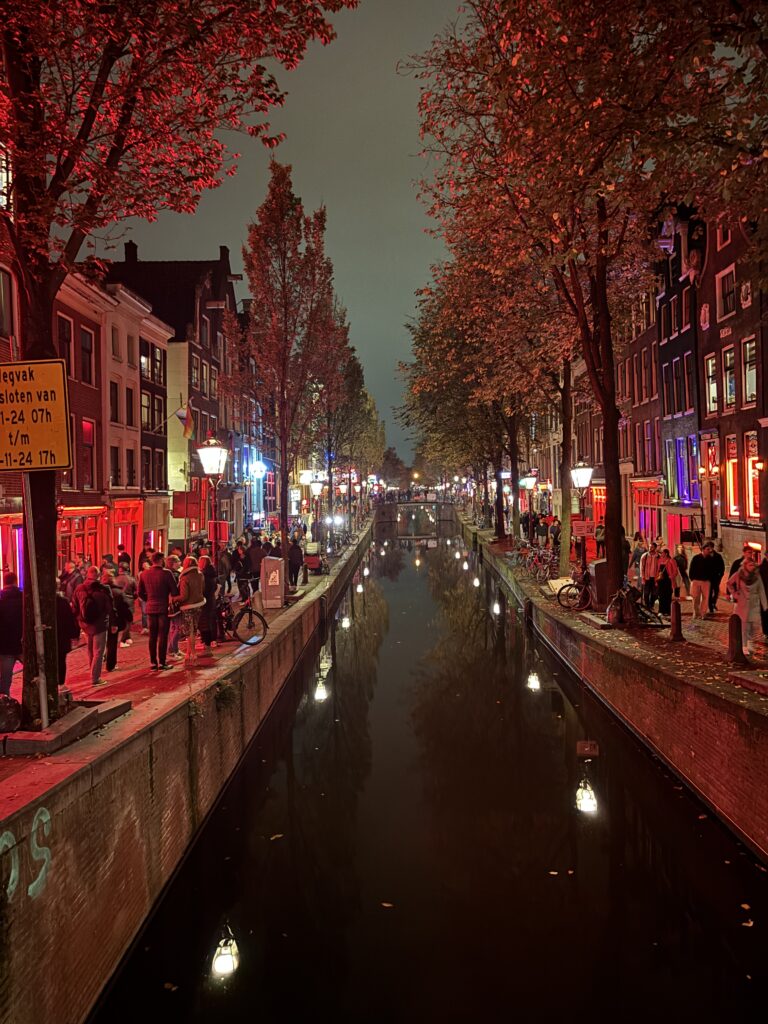
After the successful event, some of us walked around the city center to socialize and had a drink together. To wrap up the day, we took the metro towards Amsterdam Zuid, then a train to Leiden, and finally another one to return to Delft.
Thursday 31st October 2024
This day was the MOOC recording day. We had been preparing the script and slides for months, iterating with feedback from our colleagues. And now we just had a few tries to make a good presentation in front of the cameras.
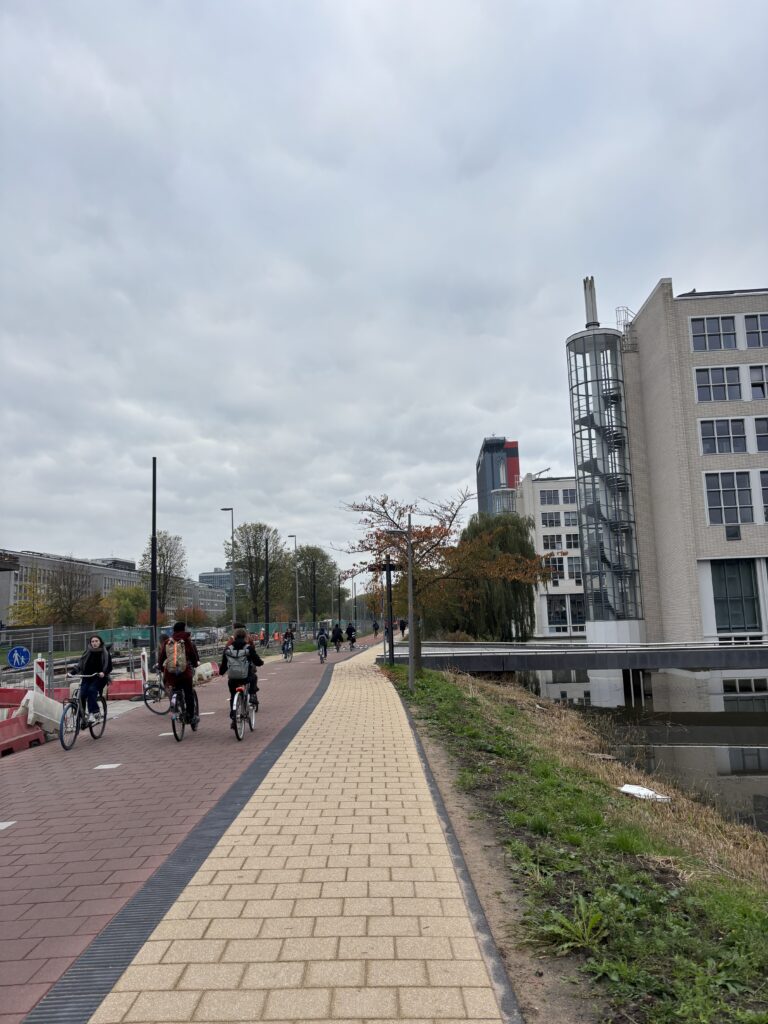
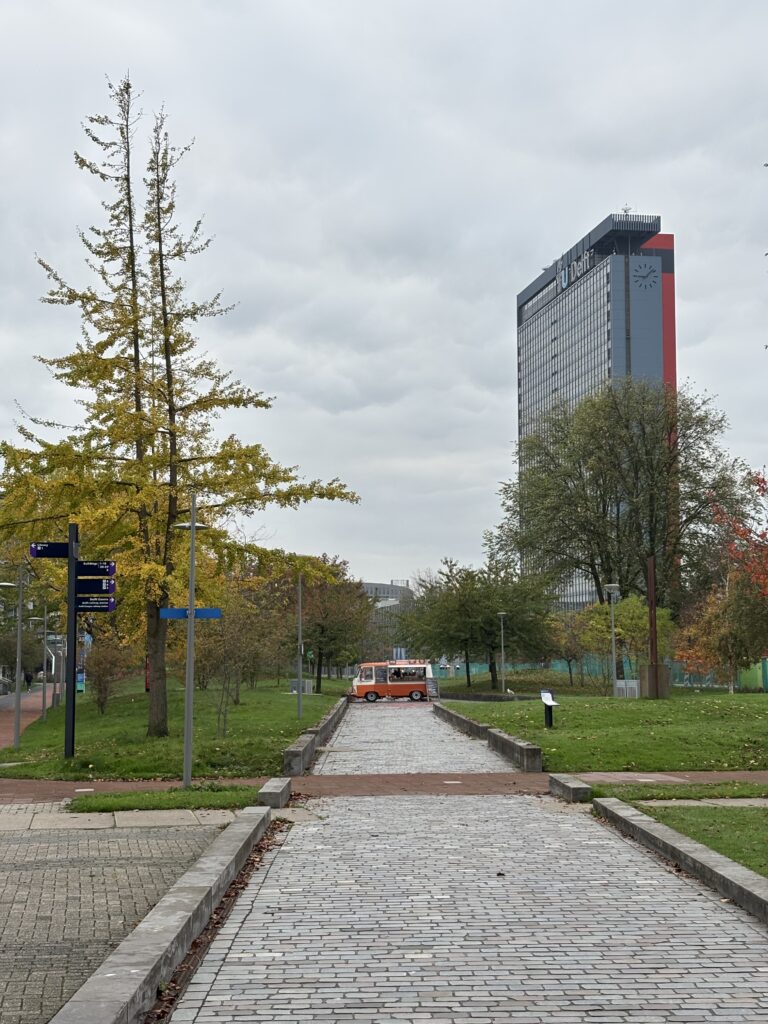

We recorded in slots at a professional studio at TU Delft, our coordinating university. With some free time in between to discuss about it. Afterward, we had lunch and walked around the campus.
In the evening, I made a trip that was not planned initially (as I bought a 5-day Interrail ticket, but ended up taking trains on 6 different days), so I bought a day return ticket to Utrecht on this case. I took the same route as when I got from Utrecht to Delft on Tuesday but reversed.
The reason for this day’s travel was to attend the first GeoMob NL event. The GeoMob events happen regularly in different cities around the world, being a relaxed environment where to attend presentations on geoinnovation, and discuss those topics with peers.
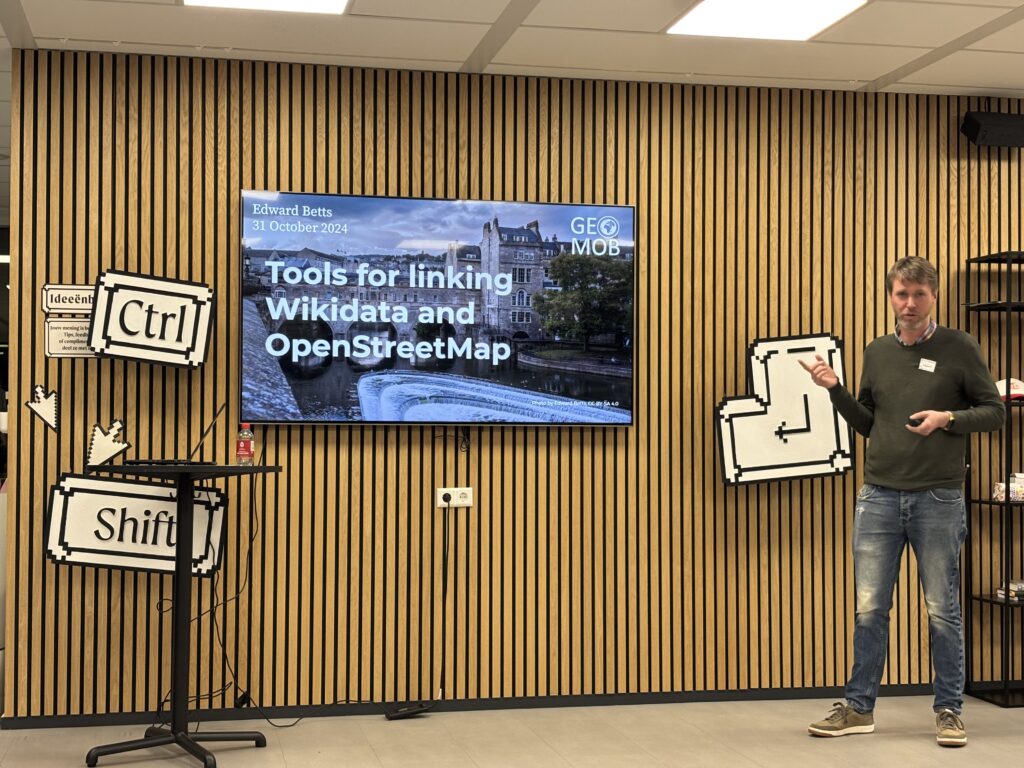
Their first event in the Netherlands just happened to be on the days that I was there, so I could not miss it! On top of the regular events, the GeoMob also produces a podcast, where you might hear someone familiar very soon… 🤫
At the end of the day, I got the train back to Delft, had some goodbye drinks with my colleagues, and went to sleep in preparation for the trip back to Italy.
Friday 1st November 2024
It was time to say goodbye to Delft and the Netherlands and embark on the trip back home. But things didn’t go as smoothly as they had on the way there. I wanted to do different routes for each way, to showcase the possibilities, so my initial plan had the Rotterdam-Paris Eurostar (ex-Thalys) route in mind, and then onwards another high-speed train towards Switzerland. However, due to Eurostar’s mandatory seat reservation policy, I had to book a seat beforehand, and when I tried, all the trains were fully booked for the day!
That means I had to go back through Germany to then step onto Switzerland. I still decided to go through Rotterdam instead of Utrecht to try this route. The line between Delft and Rotterdam, which usually takes very little time to reach, was closed during these days, which meant taking more time than it usually would.
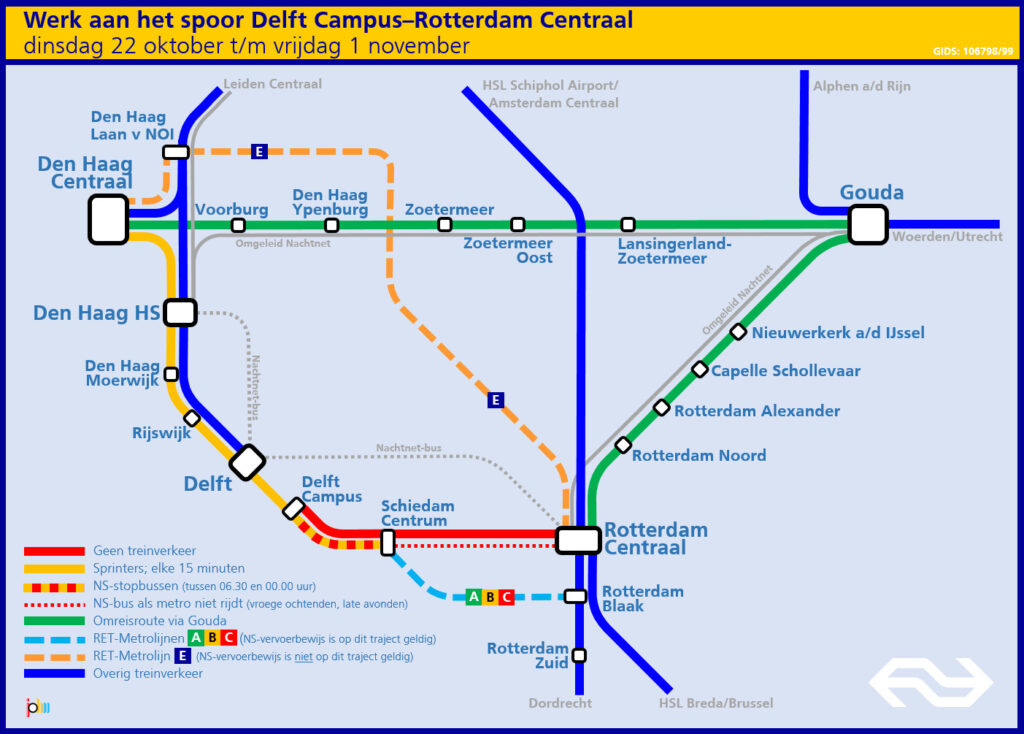
NS prepared a bus substitution service between Delft Campus and Schiedam Centrum. To connect onwards to Rotterdam Centraal, there was no bus, but instead, the traveler should use the city’s metro network to get to Rotterdam’s railway network at Blaak, with NS tickets being valid. This is the rare moment when someone with an Interrail Pass is allowed to use a metro system with it!
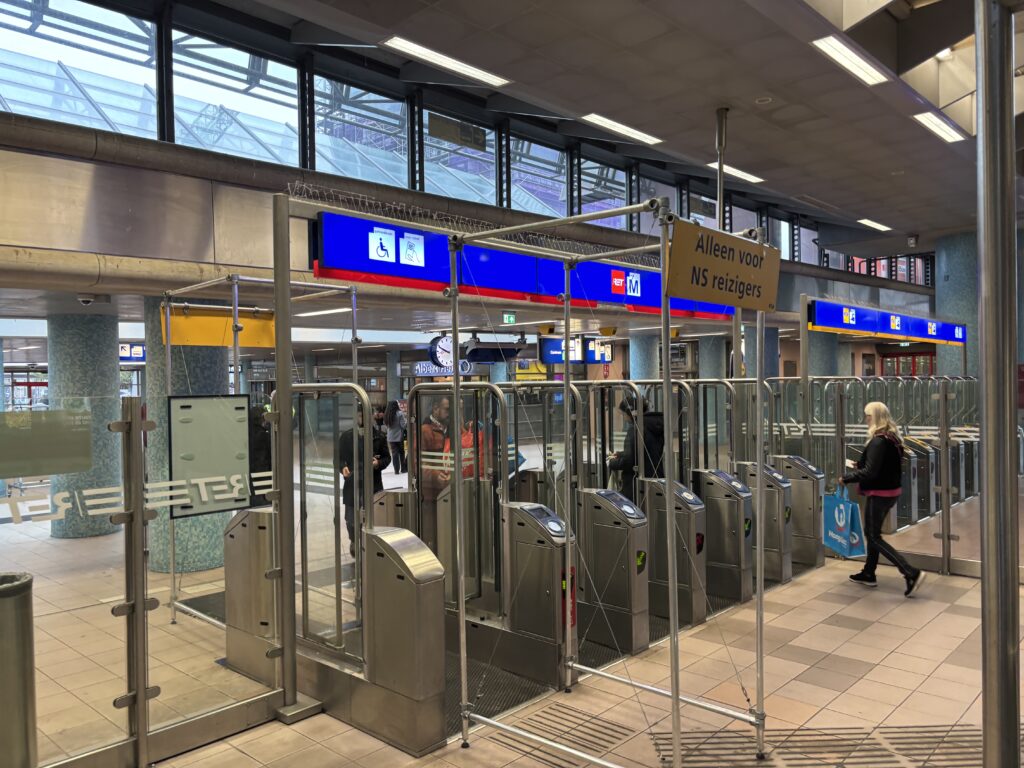
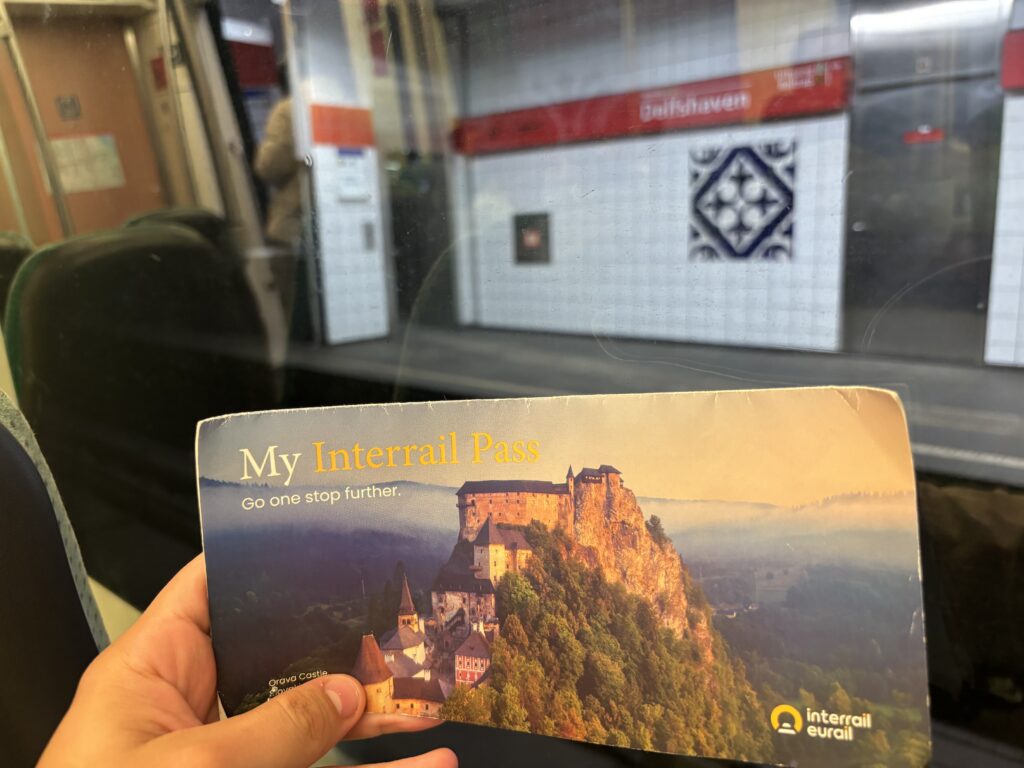
In Rotterdam, I took a southbound Intercity train towards Eindhoven Centraal, the central station of the North Brabant’s capital. There, I stopped by the supermarket to grab a local delicacy before leaving the country: Stroopwafel, thin wafer slices combined with syrup to create a tasty treat.
In Eindhoven, I could go either to Venlo or Heerlen to cross into Germany. I took the second option, which, to my despair, ended up being worse. Once I was on my next train, I realized that the international regional train route from Liège 🇧🇪 to Aachen 🇩🇪 via Heerlen 🇳🇱 was having several cancellations. The reason? Staff shortage. Uh-oh!
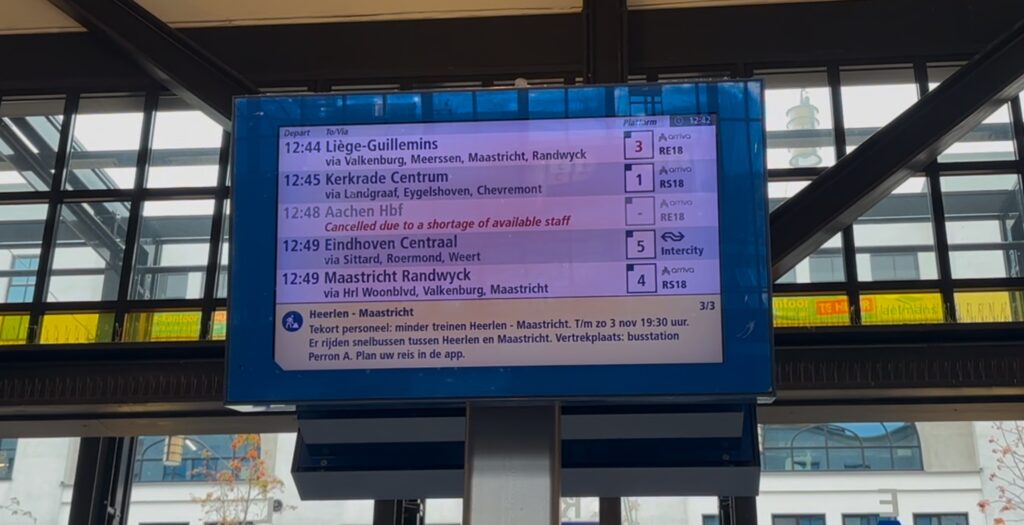
Once in Heerlen, I went to the Arriva —the train operator— ticket office. They told me a bus replacement service should be coming and I should wait. But I wait and wait, and it never comes. The train after it is also cancelled. I went back and forth multiple times to the ticket office, where they assured me a bus should have come; they finally told me that the train had not been canceled. Hurray! However, I continued with a 1 hour and 30 minutes delay compared to the schedule, and way more stressed. Any more delay, and making it to my expected destination for the day could have been problematic.
After arriving in Aachen, the first big city in Germany, I had to wait an hour for my next train, as the Brussels-Frankfurt international ICE, which stops there, only comes every two hours. A comfy ride later, I arrived at the financial capital of Germany: Frankfurt am Main. If you travel through the country, you will find yourself transferring trains often here, with its two big transfer stations: Hauptbahnhof, located inside the city, and the Airport station. Today’s route meant changing in the first one.
Another ICE took me from Frankfurt to Basel, the cultural capital of Switzerland. Basel is in the tri-border area with Germany and France, meaning it receives a lot of cross-border train traffic. One final train to end the day takes me from Basel to Brugg AG, where I will stay at a friend’s place for the next two nights.
Saturday 2nd November 2024
As I don’t have to start working again until Monday, I decided to have a resting day to visit my friend. We wandered around the cities of Brugg and Windisch (the old Roman legionary camp of Vindonissa), where we found some unexpected exotic inhabitants, an around 2000-year-old amphitheater, and a charming riverside old town.
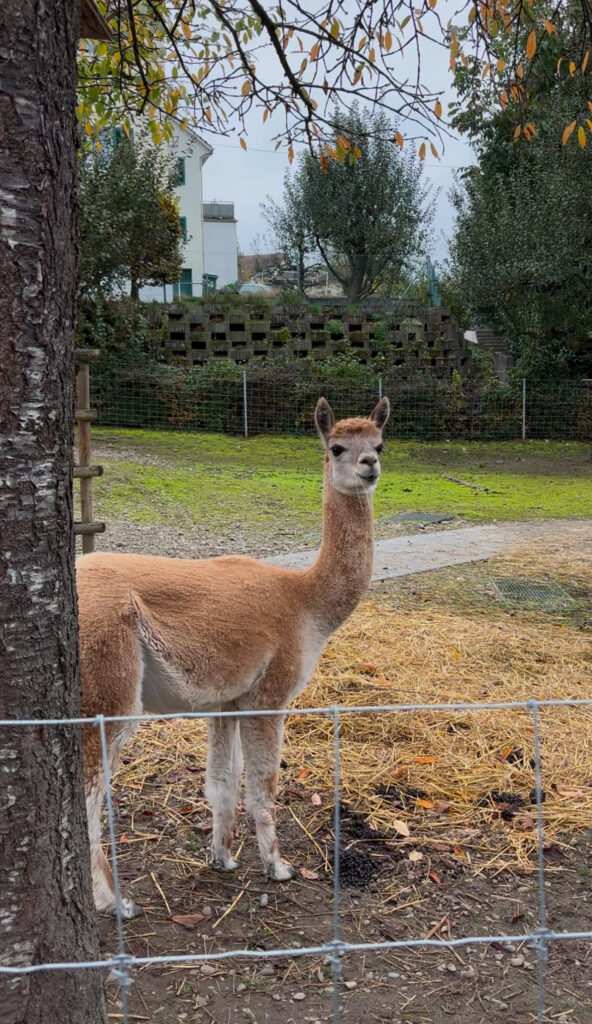
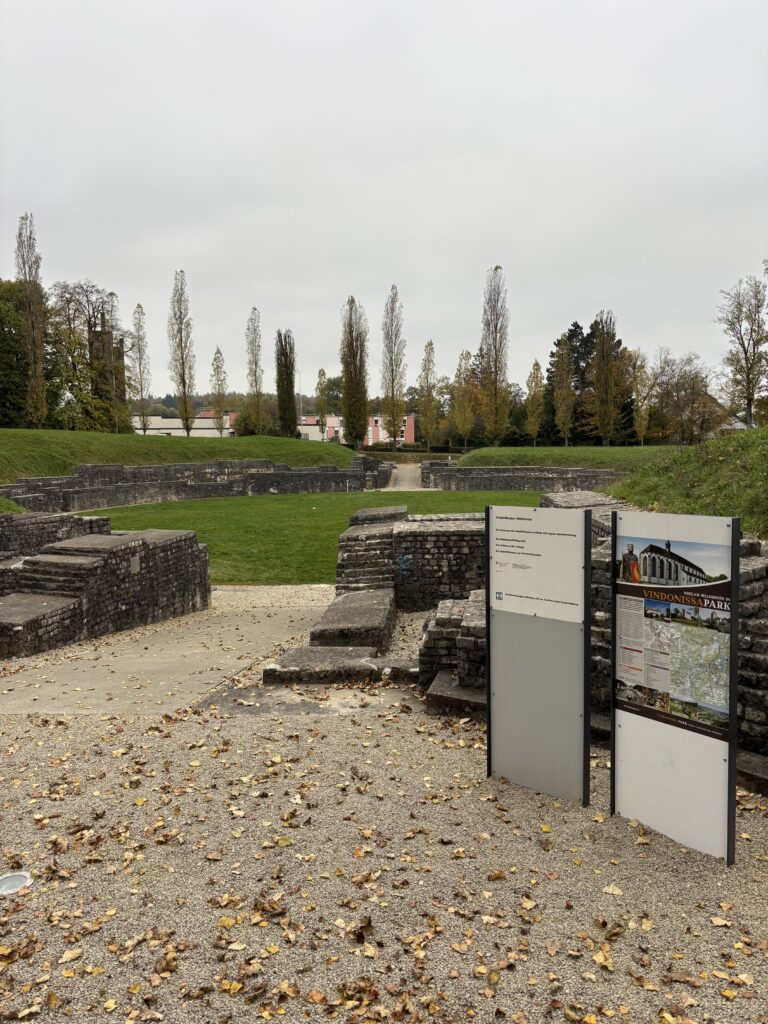
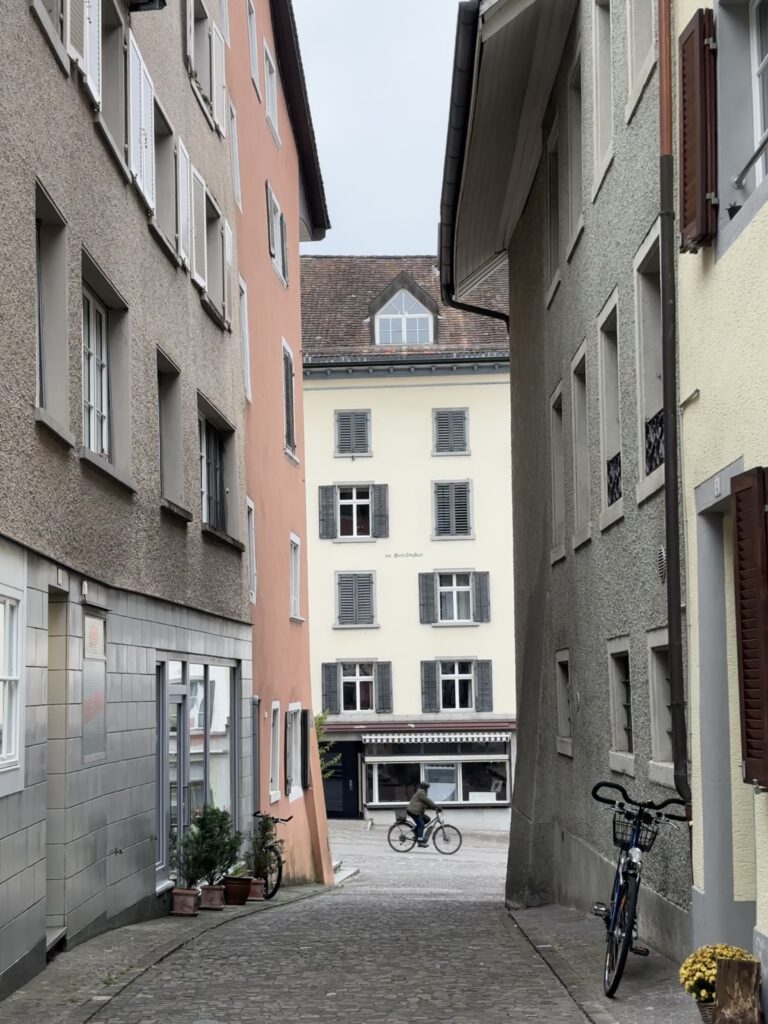
But even on a resting day, one can still enjoy trains go by…
Sunday 3rd November 2024
My day starts with taking the InterRegio service to Zürich HB after a healthy breakfast in a bakery in front of the station. Switzerland has all-day clock-face scheduling (in German: Taktfahrplan). This means that trains come at regular intervals (every 20 minutes / 30 minutes / 1 hour), making travel easy to predict, and very flexible. Want to stay for an hour in a given place? Perfect, just continue traveling on the following hourly train. Are you having a good time drinking a coffee and chatting with your friends? Just stay a bit longer, and you can take the next train.
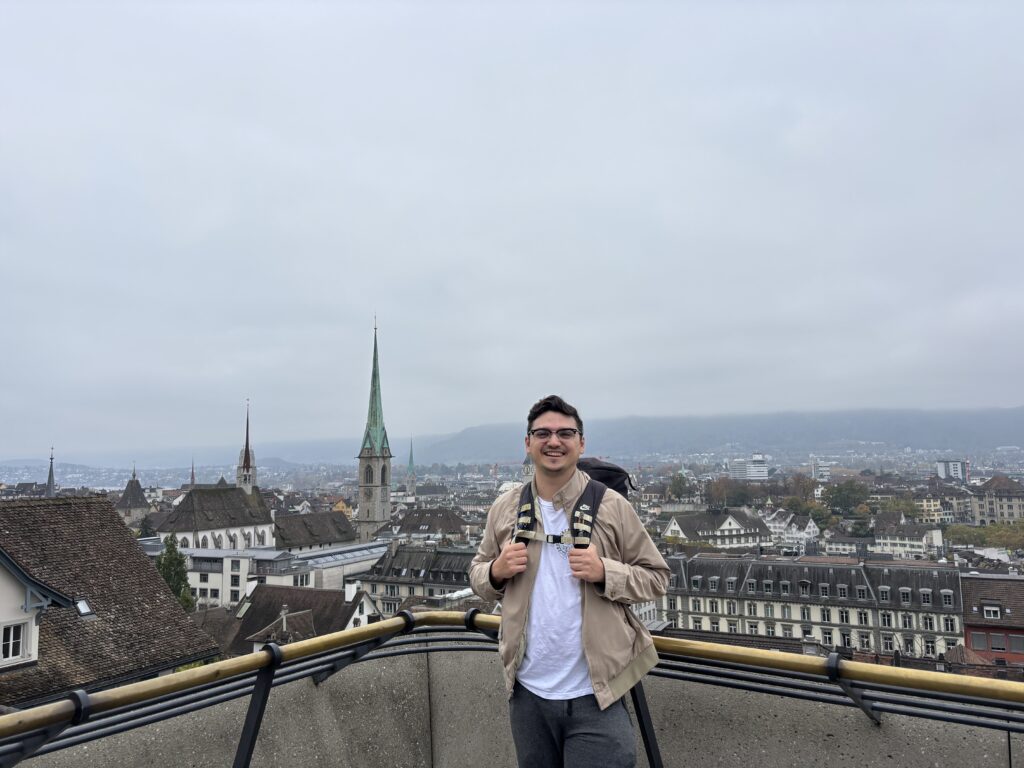
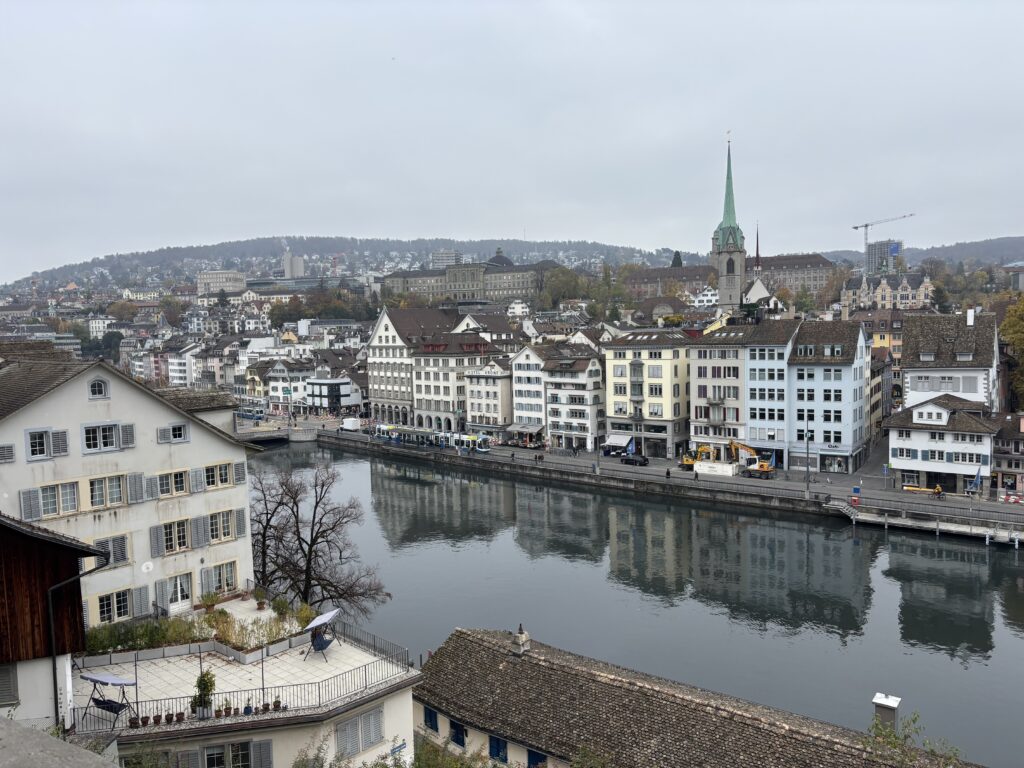
After arriving in Zürich, I set myself a couple of hours to stroll around the city, and see yet another friend (having traveled and moved around so many countries definitely has some perks 😉). They showed me around ETH’s main building and its Polyterrasse viewpoint. After a walk down and up again, I set myself at a different view from the opposite side of the Limmat: Lindenhof, the hill where the Romans located its settlement, which grew to be today’s modern city (although dwellings are reported to exist around Zürich area before that).
A quick lunch at the station street food market, and I am ready to take the next train. SBB’s EuroCity trains link Zürich with Milan directly in a bit more than 3 hours. But, as said before, long-distance trains in Italy require a mandatory seat reservation (this is not the case in Switzerland). The problem: I do not have free internet roaming in Switzerland, so I decided to hop on without the add-on, with the idea of asking the train conductor and paying the fee directly to them.
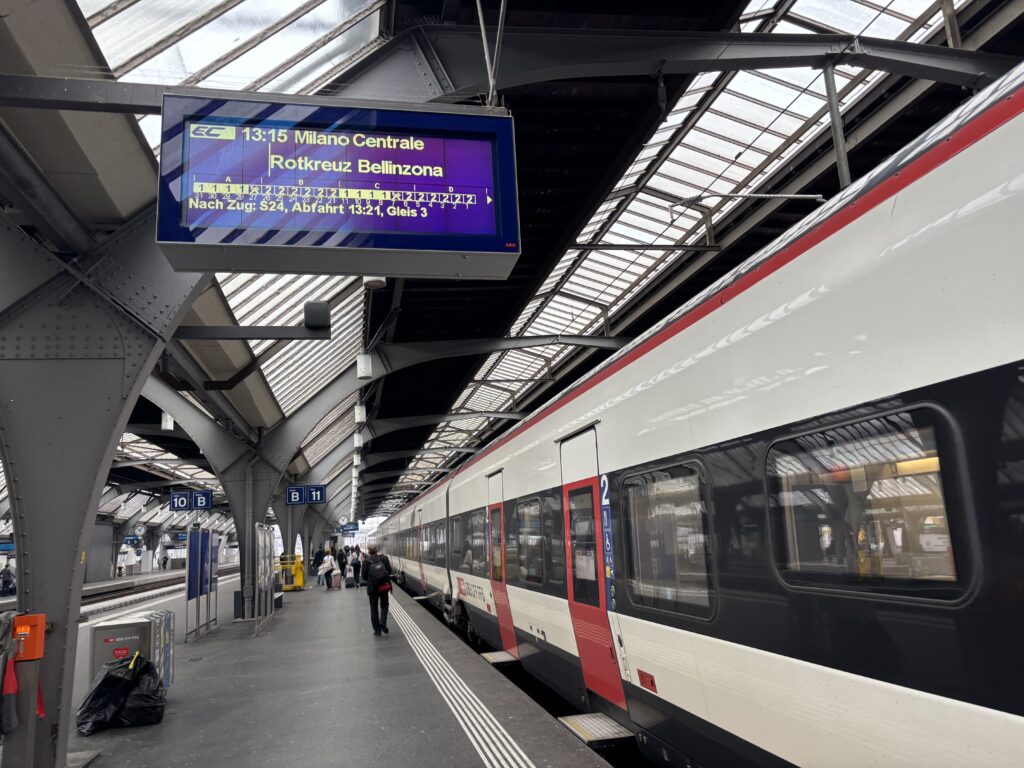
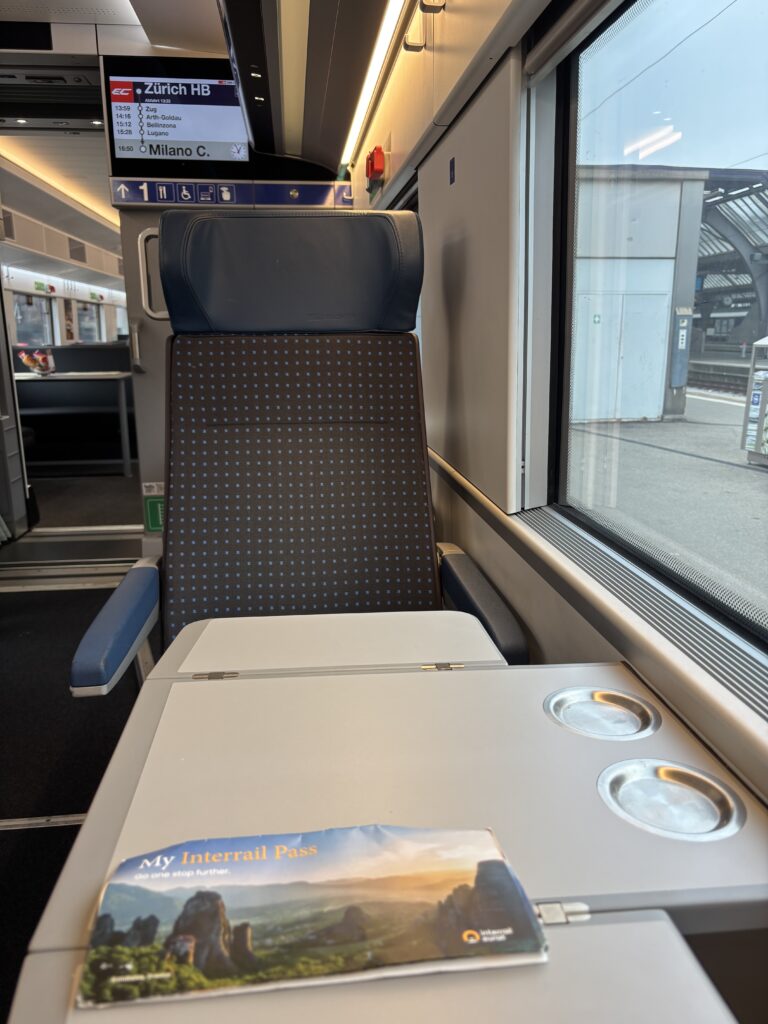
At that point, my Interrail ticket was only valid on this train as far as the border, so I hoped everything could be resolved on time. The conductor tried to sell me the supplement, but the system did not allow it after the train departure. They told me I could either wait and risk it after the border, as there will be a crew change, and the Italian conductor may have access to other systems that would allow that, or try buying the supplement online, or get off at the border. The train had a WiFi connection, so I went on to buy it. But the connection was so bad, I did not get it to work no matter how hard I tried.
Should I sit on and try my luck with the Italian crew? But that could risk getting a fine. I decided getting off at the border was the safer bet. So, contrary to my will, I had to get off at Chiasso station, a mere 200m from Italy, and 50km from Milan.
Luckily, regional TILO trains exist on this route, and they don’t require seat reservations. So I could continue my trip, but I had to wait for half an hour for the next train. This regional express was so much more packed than the EuroCity, as it costs a fraction of the cost for most travelers and takes a very similar time to reach Milan.
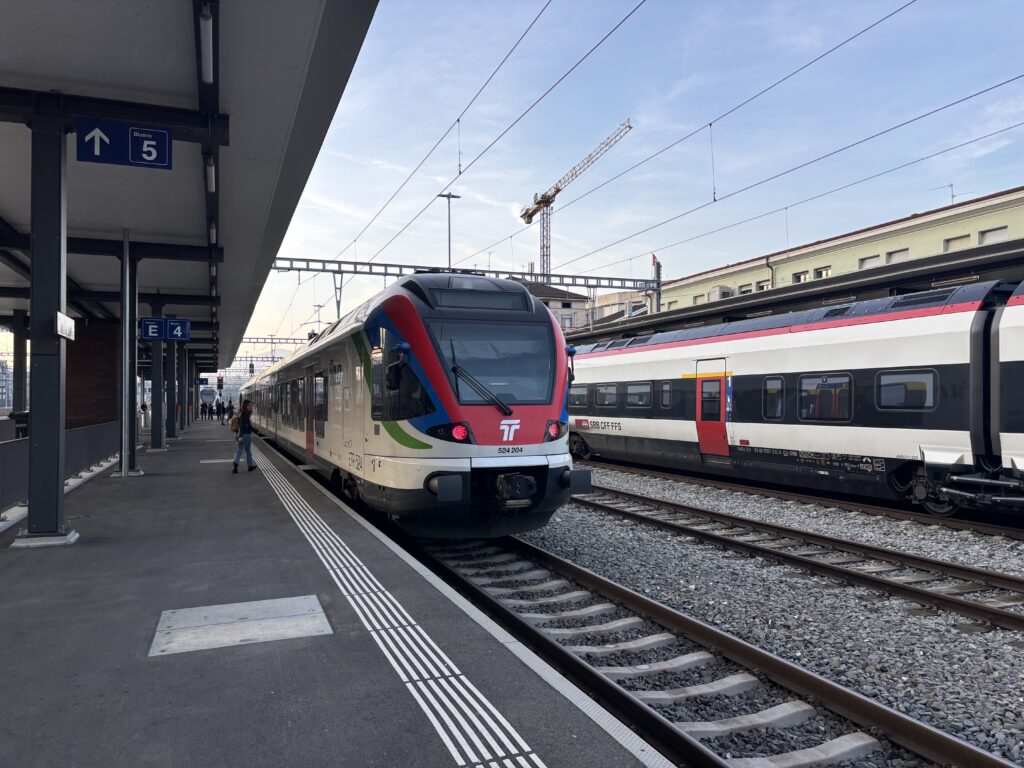
While on the train, I tried to book my onward seat reservation south of Milan only to realize that some of the trains were fully booked (but, at the same time, I could not book earlier as it was not clear when I could reach there). Luckily, someone canceled their ticket a bit before reaching, and I could buy a seat reservation. My next train would be the last one of the day and of the trip. A Frecciarossa direct to Ancona, ready for my secondment at Regione Marche.
Conclusion
Train trips are fun. You see changing landscapes and cultures, enjoying not only the stay at your destination but also the way there. You can utilize the time to work while on the move, which is much easier than when flying, and not have to go through the big airport dwell times and security control. If your single tickets cost more than €50 a day, consider an Interrail ticket. Interrail tickets offer great flexibility at a fixed price, making them ideal for business trips.
However, it also has downsides. It is advisable to research the possible routes and their limitations (timetable, seat reservations, etc.) beforehand, as this can significantly affect your trip. Remember to allow some leeway in case of unexpected delays, and only go for tight connections on high-frequency routes (avoid them if your desired route only comes a few times a day).
Overall, it can be a great experience while not costing so much, making a more efficient use of time (even if it takes longer than flying), and, of course, being environmentally friendly. So next time you have to travel for work, try the train! 🚞
Author:

